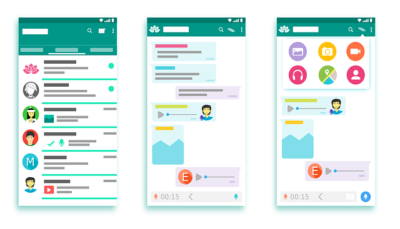Software is the foundation of most businesses today. As organizations push more and more into digital assets and customer services, the need for software production and management continues to grow.
To meet this growing demand, businesses are turning to SaaS frameworks. SaaS frameworks help businesses to easily make use of pre-made software. This can lower costs and times to market.
But what are the trends in SaaS frameworks for the year ahead? Keep reading to find out the key things to watch out for.
What is a SaaS Framework?
Before we dive into the evolution and future of SaaS frameworks, let’s first define what exactly a SaaS framework is. A SaaS framework is a set of tools, libraries, and best practices that help developers build and deploy SaaS applications.
These frameworks provide a foundation for developing software on demand. This allows businesses to focus on their core competencies.
This is rather than worrying about the technicalities of building and maintaining software. This makes SaaS an attractive option for both small startups and large enterprises.
The Early Days of SaaS Frameworks
The concept of delivering software on demand dates back to the 1960s. This is with the development of time-sharing systems. However, it wasn’t until the late 1990s that SaaS started gaining traction with the advent of enterprise applications. These are such as
- Customer Relationship Management (CRM)
- Enterprise Resource Planning (ERP)
During this period, SaaS frameworks were mostly proprietary and built for specific use cases. These frameworks were expensive and required a significant investment in infrastructure, which makes them inaccessible for small to medium-sized businesses.
The Rise of Open Source SaaS Frameworks
In the early 2000s, open-source SaaS frameworks began to emerge, which provided an alternative to proprietary solutions. One of the first open-source SaaS frameworks was SugarCRM, which offered a free and customizable CRM solution for businesses.
This gave rise to the “freemium” model, where the core functionality of a SaaS application is offered for free, with additional features available at a cost.
The popularity of open-source SaaS frameworks continued to grow with the rise of cloud computing in the late 2000s. Platforms like Amazon Web Services and Microsoft Azure provided developers with the infrastructure. This is to build and deploy SaaS applications at a lower cost.
The Modern Era of SaaS Frameworks
The modern era of SaaS frameworks is characterized by the shift towards microservices architecture. This approach breaks down a large monolithic application into smaller, independent services. Which can be independently
- built
- deployed
- managed
Microservices offer several advantages for SaaS frameworks. These include
- scalability
- fault tolerance
- easier maintenance
This has led to the development of platforms like Docker and Kubernetes, which provide a containerized environment for hosting microservices.
Future Trends in SaaS Frameworks
As technology continues to evolve, so do SaaS frameworks. Here are some key trends that we can expect to see in the future.
AI-Powered SaaS Frameworks
Artificial Intelligence (AI) has already made its way into several aspects of our lives, and SaaS frameworks are no exception. We can expect to see more AI-powered features and functionalities being integrated into SaaS applications.
This makes them more intelligent and efficient. An example is to improve on functional medicine software, which helps to keep it easy and automated.
Integration with IoT Devices
With the rise of the Internet of Things (IoT), there is a growing need for SaaS frameworks to seamlessly integrate with IoT devices. This will allow businesses to collect and analyze data from various sources, enabling them to make more informed decisions.
Focus on Security
As more companies move their operations to the cloud, security becomes a top concern. In the future, we can expect to see SaaS frameworks incorporating advanced security measures such as multi-factor authentication and data encryption to protect sensitive business information.
Vertical-Specific SaaS Frameworks
While generic SaaS solutions have been popular in the past, we can expect to see a rise in vertical-specific SaaS frameworks tailored for specific industries or niches. This will allow businesses to choose a framework that caters specifically to their needs instead of using a one-size-fits-all solution.
Greater Emphasis on User Experience
One of the key trends we expect to witness in the SaaS framework is a strengthened focus on user experience. Providing a seamless, intuitive, and engaging user interface will emerge as a differentiating factor. This is as competition intensifies.
SaaS companies will likely invest more in understanding customer journeys. This includes tailoring their applications to deliver enhanced personalized experiences.
Growth of SaaS Support Services
The demand for SaaS support services will rise. This is as businesses increasingly rely on SaaS solutions. These services may encompass technical support, user training, data migration, and integration assistance.
SaaS providers will need to offer comprehensive support. This is to ensure that customers can make the most of their software.
Increased Use of Blockchain Technology
Blockchain technology has potential applications in a variety of fields, and SaaS is no exception. It can provide
- increased data security
- transparency
- reliability
We can expect to see more SaaS frameworks incorporating blockchain technology. This is to improve data integrity and security, particularly in sectors that handle sensitive data.
The Impact of SaaS Frameworks on Businesses
The evolution of SaaS frameworks has had a significant impact on businesses. This is particularly true for small and medium-sized enterprises (SMEs). SMEs can now compete with larger corporations.
This is with the ability to access powerful software at an affordable cost. Additionally, SaaS frameworks have enabled businesses to be more agile and adapt quickly to changing market conditions.
Improve Your SaaS Framework Today
In conclusion, the evolution of SaaS frameworks has greatly enhanced the way businesses operate and has opened up a world of possibilities for the future. With constant advancements in technology, companies must stay updated on the latest trends to stay competitive in the market. So, take the first step towards the future of SaaS by incorporating these trends into your business.
Upgrade your SaaS framework and keep up with the ever-changing landscape of technology. Embrace these new developments and propel your business toward success. Don’t get left behind; start implementing these trends today!
If you want to read more articles, visit our blog.










